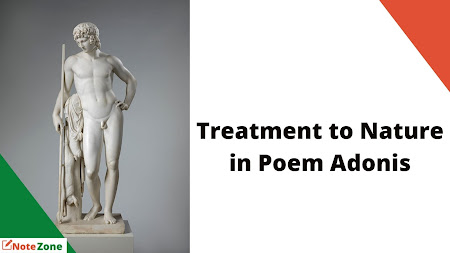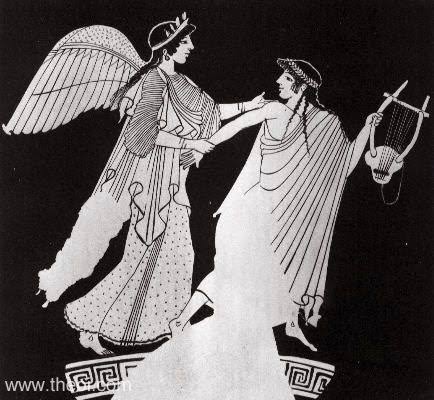 |
| Shelley's Treatment to Nature in his Poem Adonis |
N
ature has a great role in Romantic poetry.
Similarly, Shelley is not beyond this tendency. "Adonais" being a pastoral elegy contains a natural setting, natural elements, natural characters, etc. In addition, Shelley extracts images, symbols, and myths from nature. Besides, in the thematic aspect, nature has a great philosophic concern in this poem.
ature has a great role in Romantic poetry.
Similarly, Shelley is not beyond this tendency. "Adonais" being a pastoral elegy contains a natural setting, natural elements, natural characters, etc. In addition, Shelley extracts images, symbols, and myths from nature. Besides, in the thematic aspect, nature has a great philosophic concern in this poem.
Shelley looks upon Nature as an infinite source of inspiration and an object of love and admiration. In "Adonais" he draws images from Nature very skilfully. Because of the death of Keats, for example, Spring is 'wild' with grief, and it makes her throw her flower buds down as if she was Autumn, who kills the buds. Hyacinth and Narcissus become pale at the death of Keats. Thus, the nature images present the mood of enraptured joy associated with the season.
According to Shelley, Nature can offer solace to a suffering human heart. In "Adonais", different objects of Nature come forward to share the poet's agony over the premature death of Keats. For example, Morning mourns the death of Keats with her hair unbound and wet with tears. The Thunder moans and is sad with grief. Because of the death of Keats, the Ocean is pale with grief and the Winds are mad with grief. Echo is so depressed about Keats' death that she decides not to respond to wind, fountains, birds, grass, etc.
With symbolism, Shelley gives concrete shape to his abstract thoughts and emotions. The vastness of Nature is an unending source of symbols to him: In Adonais "pansies" are the symbol of the fate of his poetry and "violets" of his modesty and innocence. Objects of Nature, such as sky, stars, sun, moon, wind, and river, often stand for eternity in Shelley's poetry. In 'Adonais', too, we find such a reference to the immortality of stars - "And the immortal stars awake again”.
Shelley is pantheistic in his treatment of Nature in that he seems to believe that every aspect of Nature is only a manifestation of one indivisible soul or spirit and that after the end of the earthly existence everything is reunited with that one soul:
...a portion of the loveliness
Which once he made more lovely; he doth bear
His part, while the one Spirit's plastic stress
Sweeps through the dull dense world, compelling there
All new successions to the forms they wear
With the capacity to feel Nature and its phenomena, Shelley creates nature myths in 'Adonais. "He can detach himself from the past and the present and go on creating fresh and new nature myths at will. 'Adonais' is full of such myths, that is, personifications of nature. Morning, thunder, ocean, winds, echo, spring and other aspects of Nature have been personified and made to mourn the death of Keáts to establish the bond of love that united nature with mankind”.
Thus, Shelley's treatment of nature conforms to the theme of Adonais". In the poem, all nature mourns the death of Keats. Nature is also used as a means of consolation for human beings in their loss.



0 Comments